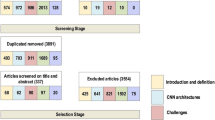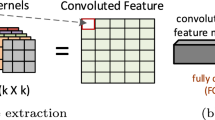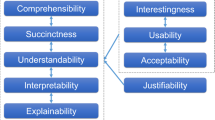Abstract
Deep learning compiler tool, Tensor Virtual Machine (TVM), has excellent deployment, compilation, and optimization capabilities supported by the industry following the vigorous growth in neural networks (NN). It has a unified intermediate representation (IR) format that can provide efficient compilation and portability. However, its high operational complexity requires considerable effort in development. For beginners with programming backgrounds, a new and easy-to-use design approach is needed. This paper proposes a visual concept approach that can execute artificial intelligence (AI) computing using block-based tools with AI knowledge. This research also develops a web-based NNBlocks framework that uses this approach to integrate with TVM. We conduct experiments to evaluate this approach: (1) interviewees assessed intuition through operating. (2) Interviewees answered a Usability Metric for User Experience (UMUX) to evaluate usability. (3) Interviewees answered the significance of the theme survey assessment. (4) The impact on the system was evaluated through experiments. The results indicate that interviewees respond positively to the intuitiveness of the framework. The usability evaluation of UMUX meets expectations. The theme survey shows that the framework is significant for AI learning. The experiments of the impact indicate that the framework will not burden the system.



















Similar content being viewed by others
Notes
References
Abadi M, Barham P, Chen J, Chen Z, Davis A, Dean J, Devin M, Ghemawat S, Irving G, Isard M, Kudlur M, Levenberg J, Monga R, Moore S, Murray DG, Steiner B, Tucker P, Vasudevan V, Warden P, Wicke M, Yu Y, Zheng X (2016) TensorFlow: a system for large-scale machine learning. In: Proceedings of the 12th USENIX conference on operating systems design and implementation (OSDI ’16), USENIX Association, Savannah, GA, USA, pp 265–283. https://doi.org/10.5555/3026877.3026899
Aivaloglou E, Hermans F (2016) How kids code and how we know: an exploratory study on the scratch repository. In: Proceedings of the 2016 ACM conference on international computing education research (ICER ’16), ACM, Melbourne, VIC, Australia, pp 53–61. https://doi.org/10.1145/2960310.2960325
Alturayeif N, Alturaief N, Alhathloul Z (2020) DeepScratch: scratch programming language extension for deep learning education. Int J Adv Comput Sci Appl 11(7):642–650. https://doi.org/10.14569/IJACSA.2020.0110777
Bajzek M, Bort H, Hunpatin O, Mivshek L, Much T, O’Hare C (2015) MUzECS: embedded blocks for exploring computer science. In: Proceedings of the IEEE blocks and beyond workshop (B&B ’15), IEEE, Atlanta, GA, USA, pp 127–132. https://doi.org/10.1109/BLOCKS.2015.7369021
Bangor A, Kortum PT, Miller JT (2008) An empirical evaluation of the system usability scale. Int J Hum Comput Interact 24(6):574–594. https://doi.org/10.1080/10447310802205776
Bastien F, Lamblin P, Pascanu R, Bergstra J, Goodfellow I, Bergeron A, Bouchard N, Warde-Farley D, Bengio Y (2012) Theano: new features and speed improvements. arXiv:cs.SC/1211.5590
Benayache A, Bilami A, Barkat S, Lorenz P, Taleb H (2019) MsM: a microservice middleware for smart WSN-based IoT application. J Netw Comput Appl 144:138–154. https://doi.org/10.1016/j.jnca.2019.06.015
Brooke J (1996) SUS: a quick and dirty usability scale. In: Usability evaluation in industry, pp 189–194. https://doi.org/10.1201/9781498710411
Chen T, Li M, Li Y, Lin M, Wang N, Wang M, Xiao T, Xu B, Zhang C, Zhang Z (2015) MXNet: a flexible and efficient machine learning library for heterogeneous distributed systems. arXiv preprint arXiv:cs.DC/1512.01274
Chen T, Moreau T, Jiang Z, Zheng L, Yan E, Cowan M, Shen H, Wang L, Hu Y, Ceze L, Guestrin C, Krishnamurthy A (2018) TVM: An automated end-to-end optimizing compiler for deep learning. In: Proceedings of the 13th USENIX conference on operating systems design and implementation (OSDI ’18), USENIX Association, Carlsbad, CA, USA, pp 579–594. https://doi.org/10.5555/3291168.3291211
Chen Y, Luca GD (2016) VIPLE: Visual IoT/Robotics programming language environment for computer science education. In: Proceedings of the IEEE international parallel and distributed processing symposium workshops (IPDPSW ’16), IEEE, Chicago, IL, USA, pp 963–971. https://doi.org/10.1109/IPDPSW.2016.55
Cong J, Xiao B (2014) Minimizing computation in convolutional neural networks. In: Artificial neural networks and machine learning—ICANN, vol 8681, Springer, pp 281–290. https://doi.org/10.1007/978-3-319-11179-7_36
Finstad K (2010) The usability metric for user experience. Interact Comput 22(5):323–327. https://doi.org/10.1016/j.intcom.2010.04.004
Glenn T, Ipsita A, Carithers C, Peppler K, Ramani K (2020) StoryMakAR: Bringing stories to life with an augmented reality & physical prototyping toolkit for youth. In: Proceedings of the 2020 CHI conference on human factors in computing systems (CHI ’20), ACM, Honolulu, HI, USA, pp 1–14. https://doi.org/10.1145/3313831.3376790
Holwerda R, Hermans F (2018) A usability analysis of blocks-based programming editors using cognitive dimensions. In: Proceedings of the IEEE symposium on visual languages and human-centric computing (VL/HCC ’18), IEEE, Lisbon, Portugal, pp 217–225. https://doi.org/10.1109/VLHCC.2018.8506483
Hwang YS, Lin HH, Pai SH, Tu CH (2019) GPUBlocks: GUI Programming Tool for CUDA and OpenCL. J Signal Process Syst 91(3):235–245. https://doi.org/10.1007/s11265-018-1395-2
Jatzlau S, Michaeli T, Seegerer S, Romeike R (2019) It’s not magic after all—machine learning in Snap! using reinforcement learning. In: Proceedings of the IEEE blocks and beyond workshop (B&B ’19), IEEE, Memphis, TN, USA, pp 37–41. https://doi.org/10.1109/BB48857.2019.8941208
Jia Y, Shelhamer E, Donahue J, Karayev S, Long J, Girshick R, Guadarrama S, Darrell T (2014) Caffe: Convolutional architecture for fast feature embedding. In: Proceedings of the 22nd ACM international conference on multimedia (MM ’14), ACM, Orlando, Florida, USA, pp 675–678. https://doi.org/10.1145/2647868.2654889
Johnson C, Bui P (2015) Blocks in, blocks out: a language for 3D Models. In: Proceedings of the IEEE blocks and beyond workshop (B&B ’15), IEEE, Atlanta, GA, USA, pp 77–82. https://doi.org/10.1109/BLOCKS.2015.7369007
Krishnamoorthy SP, Kapila V (2016) Using a visual programming environment and custom robots to learn C programming and K-12 STEM concepts. In: Proceedings of the 6th annual conference on creativity and fabrication in education (FabLearn ’16), ACM, Stanford, CA, USA, pp 41–48. https://doi.org/10.1145/3003397.3003403
Maloney J, Resnick M, Rusk N, Silverman B, Eastmond E (2010) The scratch programming language and environment. ACM Trans Comput Educ. https://doi.org/10.1145/1868358.1868363
Mao D, Wang F, Wang Y, Hao Z (2019) Visual and user-defined smart contract designing system based on automatic coding. IEEE Access 7:73131–73143. https://doi.org/10.1109/ACCESS.2019.2920776
Maquil V, Moll C, Schwartz L, Hermen J (2018) Kniwwelino: A lightweight and WiFi enabled prototyping platform for children. In: Proceedings of the twelfth international conference on tangible, embedded, and embodied interaction (TEI ’18), ACM, Stockholm, Sweden, pp 94–100. https://doi.org/10.1145/3173225.3173275
Mattioli A, Paternò F (2020) A visual environment for end-user creation of IoT customization rules with recommendation support. In: Proceedings of the international conference on advanced visual interfaces (AVI ’20), ACM, Salerno, Italy. https://doi.org/10.1145/3399715.3399833
Paramasivam V, Huang J, Elliott S, Cakmak M (2017) Computer science outreach with end-user robot-programming tools. In: Proceedings of the 2017 ACM SIGCSE technical symposium on computer science education (SIGCSE ’17), ACM, Seattle, Washington, USA, pp 447–452. https://doi.org/10.1145/3017680.3017796
Poole M (2017) Extending the design of a blocks-based python environment to support complex types. In: Proceedings of the IEEE blocks and beyond workshop (B&B ’17), IEEE, Raleigh, NC, USA, pp 1–7. https://doi.org/10.1109/BLOCKS.2017.8120400
Protzenko J (2015) Pushing blocks all the way to C++. In: Proceedings of the IEEE blocks and beyond workshop (B&B ’15), IEEE, Atlanta, GA, USA, pp 91–95. https://doi.org/10.1109/BLOCKS.2015.7369010
Rao A, Bihani A, Nair M (2018) Milo: A visual programming environment for Data Science Education. In: 2018 IEEE symposium on visual languages and human-centric computing (VL/HCC ’18), IEEE, Lisbon, Portugal, pp 211–215. https://doi.org/10.1109/VLHCC.2018.8506504
Rodríguez FJ, Smith RC, Smith A, Boyer KE, Wiebe EN, Mott BW, Lester JC (2019) Toward a responsive interface to support novices in block-based programming. In: Proceedings of the IEEE blocks and beyond workshop (B&B ’19), IEEE, Memphis, TN, USA, pp 9–13. https://doi.org/10.1109/BB48857.2019.8941205
Rodríguez-Gil L, García-Zubia J, Orduña P, Villar-Martinez A, López-De-Ipiña D (2019) New approach for conversational agent definition by non-programmers: a visual domain-specific language. IEEE Access 7:5262–5276. https://doi.org/10.1109/ACCESS.2018.2883500
Roesch J, Lyubomirsky S, Weber L, Pollock J, Kirisame M, Chen T, Tatlock Z (2018) Relay: A new IR for machine learning frameworks. In: Proceedings of the 2nd ACM SIGPLAN international workshop on machine learning and programming languages (MAPL ’18), ACM, Philadelphia, PA, USA, pp 58–68. https://doi.org/10.1145/3211346.3211348
Seraj M, Große CS, Autexier S, Drechsler R (2019) Look what i can do: acquisition of programming skills in the context of living labs. In: Proceedings of the 41th IEEE/ACM international conference on software engineering: software engineering education and training (ICSE-SEET ’19), IEEE, Montreal, QC, Canada, pp 197–207. https://doi.org/10.1109/ICSE-SEET.2019.00029
Serna MÁ, Sreenan CJ, Fedor S (2015) A visual programming framework for wireless sensor networks in smart home applications. In: Proceedings of the IEEE tenth international conference on intelligent sensors, sensor networks and information processing (ISSNIP ’15), IEEE, Singapore, Singapore, pp 1–6. https://doi.org/10.1109/ISSNIP.2015.7106946
Stewart AE, Keirn ZA, D’Mello SK (2018) Multimodal modeling of coordination and coregulation patterns in speech rate during triadic collaborative problem solving. In: Proceedings of the 20th ACM international conference on multimodal interaction (ICMI ’18), ACM, Boulder, CO, USA, pp 21–30. https://doi.org/10.1145/3242969.3242989
Tokui S, Okuta R, Akiba T, Niitani Y, Ogawa T, Saito S, Suzuki S, Uenishi K, Vogel B, Yamazaki Vincent H (2019) Chainer: A deep learning framework for accelerating the research cycle. In: Proceedings of the 25th ACM SIGKDD international conference on knowledge discovery and data mining (KDD ’19), ACM, Anchorage, AK, USA, pp 2002–2011. https://doi.org/10.1145/3292500.3330756
Tomlein M, Grønbæk K (2017) A visual programming approach based on domain ontologies for configuring industrial IoT installations. In: Proceedings of the seventh international conference on the internet of things IoT ’17, ACM, Linz, Austria, pp 1–9. https://doi.org/10.1145/3131542.3131552
Vasilache N, Zinenko O, Theodoridis T, Goyal P, DeVito Z, S Moses W, Verdoolaege S, Adams A, Cohen A (2018) Tensor comprehensions: framework-agnostic high-performance machine learning abstractions. arXiv:cs.PL/1802.04730
Weintrop D, Wilensky U (2017) Comparing block-based and text-based programming in high school computer science classrooms. ACM Trans Comput Educ. https://doi.org/10.1145/3089799
Weintrop D, Shepherd CD, Francis P, Franklin D (2017) Blockly goes to work: block-based programming for industrial robots. In: Proceedings of the IEEE blocks and beyond workshop (B&B ’17), IEEE, Raleigh, NC, USA, pp 29–36. https://doi.org/10.1109/BLOCKS.2017.8120406
Zatarain-Cabada R, Barrón-Estrada ML (2016) Ríos-Félix JM (2017) Affective learning system for algorithmic logic applying gamification. In: Advances in soft computing—MICAI, vol 10062, Springer, pp 536–547. https://doi.org/10.1007/978-3-319-62428-0_44
Acknowledgements
The work is supported by the Taiwan Ministry of Science and Technology under Grant No.: MOST 107-2221-E-007-005-MY3.
Author information
Authors and Affiliations
Corresponding author
Additional information
Publisher's Note
Springer Nature remains neutral with regard to jurisdictional claims in published maps and institutional affiliations.
Rights and permissions
About this article
Cite this article
Chen, TL., Chen, YR., Yu, MS. et al. NNBlocks: a Blockly framework for AI computing. J Supercomput 77, 8622–8652 (2021). https://doi.org/10.1007/s11227-021-03631-9
Accepted:
Published:
Issue Date:
DOI: https://doi.org/10.1007/s11227-021-03631-9




